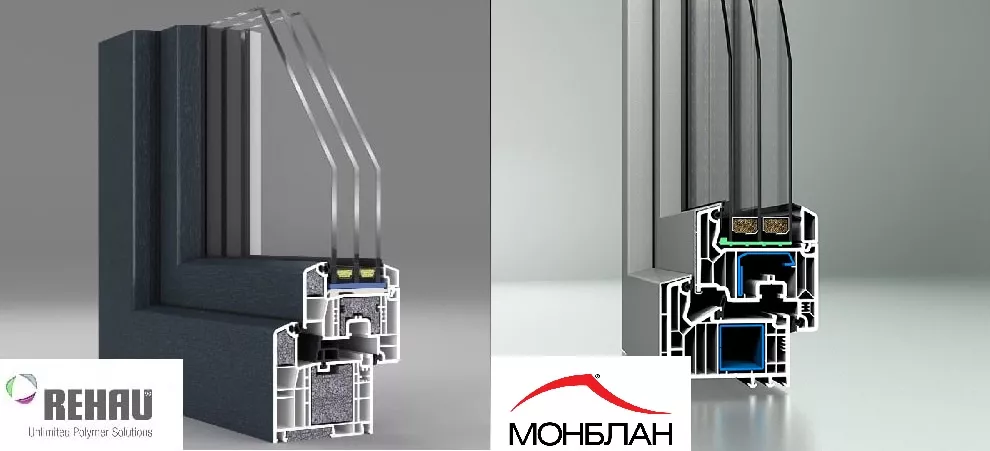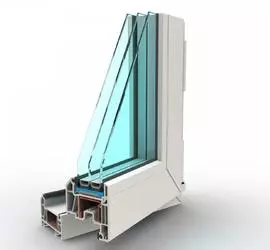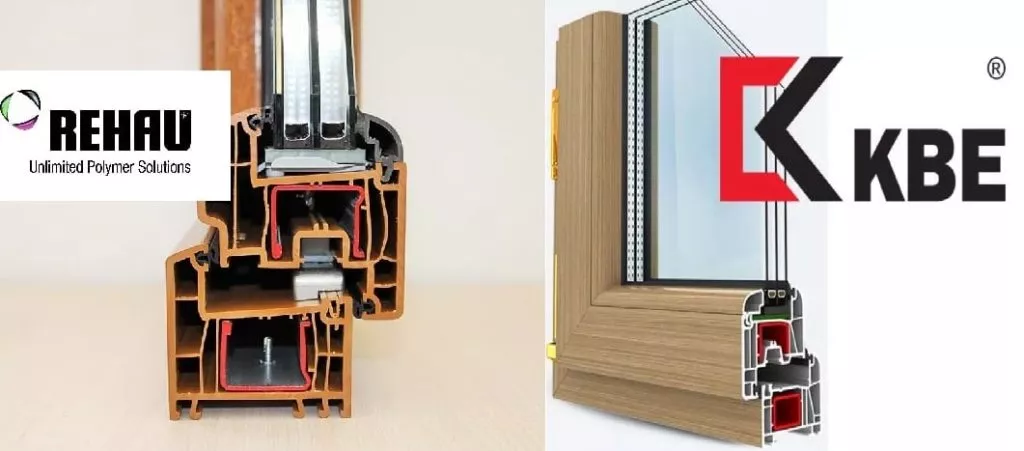
A balcony is not only a useful space, but also an area of responsibility for the owner. It is you who must decide where to go to order glazing, which profiles to choose taking into account the load on the concrete slab. It is you who needs to do repairs, finishing, and insulation in the extension. The specific use of a balcony depends on its area. Thus, spacious rooms can be used as a relaxation room, bedroom, guest room, or playroom. And the possibilities of tiny balconies are limited to a study, a workshop for creativity, and growing seedlings. However, if you wish, you can legally increase the area by ordering glazing with extension. Let's talk today about its features.
This is an opportunity to increase the functional space of a small balcony or loggia. The glazing is mounted on a special frame, outside the boundaries of the base slab, which frees up 30 cm of free space. The take-out service is popular in small-sized housing, including Khrushchev-era buildings and individual series of the 70-80s. Construction in those years proceeded at a rapid pace; the priority was not comfort, but the opportunity to resettle representatives of the party elite and production leaders as quickly as possible. Most of these houses are still in use today and are not planned for demolition. Therefore, it makes sense to independently think about expanding the space and order remote glazing for the balcony.
This is the transfer of glazing beyond the border of the balcony slab (or parapet), the purpose of which is to increase the usable area. With this type, supporting structures are necessarily installed to reduce the load on the base. The recommended offset value is 30 cm, in some cases an increase to 40 cm is allowed. The maximum is 50 cm, which is rarely chosen. Larger values are not possible due to excessive load on the plate.

Restrictions and prohibitions
Having decided to increase the area of the balcony by removing the glazing, you need to take into account the letter of the law. So, there are several cases in which taking out will not work:
- If the wall adjacent to the extension is in disrepair: covered with cracks, bricks are falling out of it.
- The weight of the external structure is more than 80 kg, and the load-bearing wall is not designed for such a load. In this case, individual consultation is required – perhaps it is impossible to install only plastic windows, but removal with cold aluminum systems is allowed.
- Cracks and chips in the base of the balcony, protruding rusty fittings and other signs of unsatisfactory condition.
- First floor. The removal assumes a protruding visor on which dust and debris will accumulate
- Floor above the sixth in high-rise apartment buildings.
- Installation involves causing damage to neighbors' balconies.
- In buildings of historical or cultural value. Changing their appearance is unacceptable.
The age of the balcony also requires special attention. Often old extensions were built from high-quality material, so even now their foundations are in good condition. But more often, a slab that is 30+ years old is worn out, covered with cracks and is not intended for heavy loads. Therefore, when ordering glazing for a balcony with an extension, a diagnosis of the base is first carried out and only after this a decision is made on the feasibility of the project.

The main advantage of external glazing is the expansion of the balcony area. It may seem that 30 cm will not play a special role, but in reality this is a good increase, allowing you to install compact furniture and organize storage.
Other advantages:
- Improving illumination by increasing light openings.
- Expanding the scope of use of the balcony. If previously you were limited by household needs, now you can easily get a residential balcony.
- You will receive an extended window sill on which you can not only grow flowers or seedlings, but also organize a work surface, such as a tabletop.
- Improving the aesthetics of the facade.
- You can choose warm or cold glazing, a convenient option for swinging the sash. The frames themselves can be standard or painted (aluminium), laminated (PVC).
Among the disadvantages of the remote project, we note the need to obtain permits. Many people are not afraid of installation and the dust and dirt associated with it, and they are not upset by the financial aspect. But it is the bureaucratic machine that brings us to a dead end. Let's look at the main points:
- If you plan to remove more than 30 cm, you must obtain permission.
- If the parapet is in a worn state, be prepared to strengthen it.
- To implement a complex project, for example, installation on stilts, you will need the permission of all neighbors whose apartments are located below yours. And it is mandatory to obtain it – if dissatisfied residents file a lawsuit, the negligent owner will be obliged to dismantle the innovation at his own expense.
Another disadvantage is that the price of remote glazing is higher than standard glazing. This is due to the complexity of the work, the need to manufacture a frame and strengthen the concrete base. In addition, the increased canopy area will create a greater drum effect during precipitation.
Depending on your glazing needs, you can choose warm or cold take-out systems. So, if the goal is to get living space in the Moscow climate, a warm option will do. But if you need a utility balcony for storage, cold aluminum profiles are quite enough. Let's look at the features of each of them.
Warm
Warm glazing of a balcony with removal involves the installation of plastic windows. These are multi-chamber structures made of high-quality and environmentally friendly PVC, completely sealed and protecting from negative external factors. Plastic windows reduce the level of noise entering your home, so if you live next to a construction site, sports ground, or kindergarten, they will ensure silence.
However, PVC systems have an impressive weight. Therefore, in most cases, they are not suitable for glazing with removal in old houses such as Khrushchev. The base of the balcony will not cope with the load and may collapse. Therefore, it will not be possible to obtain permission for such a project. Another disadvantage is that the price of plastic systems is higher than that of aluminum cold systems.
The advantages include the possibility of year-round use of the balcony. However, in addition to installing PVC windows, you will need to insulate the room.

Cold
If, when ordering glazing with extension, the minimum cost is your priority, choose aluminum cold profiles. Due to their light weight, they will not create a significant load on the base slab and are suitable for any balconies. Such windows let in maximum natural light because they have narrow frames.
Among the minuses, we note insufficient thermal insulation. Metal allows heat to pass through and will not be able to retain it in the room. Therefore, it will not be possible to make a balcony residential in the climate of the middle zone; in winter it will be only a few degrees warmer than outside. Scope of application: warehouse, drying clothes, storing crops and household supplies. However, the structures protect well from wind, dust, debris, and precipitation. They are sealed due to special brush seals, durable, and easy to maintain.


Glazing a balcony with a remote window sill is the most popular and less technically complex option. More often they decide to order it for panel houses in order to get an additional usable area of 30-35 cm for flowers, decor, and countertops.
Peculiarities:
- Can be implemented frontally or on three sides.
- The glazing is transferred above the parapet to the width of the window sill, thereby increasing the area.
- Modifications do not affect the floor plane.
Glazing of the loggia with such an extension is allowed, but it is carried out only in the frontal plane; extensions are not carried out on the sides. Sometimes such glazing makes it possible to give a loggia with irregular geometry a neat quadrangle shape – for this purpose they make an extension along the “oblique” side.

Removing the balcony along the floor is technically more complex, which increases the price and complicates obtaining permission. However, the technology allows you to get up to 50 cm of additional space. Most often, this option is chosen in buildings with a metal parapet. To increase the area of the extension, the existing slab is reconstructed and strengthened, for which grates and ties are used.
Peculiarities:
- To expand the base, the existing parapet is dismantled and the wall is built up.
- To strengthen the structure, special channels and metal corners (usually made of steel) are used. If any area of the floor is damaged, it is replaced with a metal sheet.
- Suitable materials for the new parapet are corrugated sheets, brick or foam block masonry, and sandwich panels.
- It is easier to implement such glazing on the lower floors. In this case, piles can be used for strengthening.
Removing the balcony along the floor requires proper quality of the base slab. Therefore, in order to obtain permission, it is necessary, by law, to verify its strength and reliability. This method is often chosen in new houses, the floors of which are in perfect condition.

This is a private and rare variation of balcony glazing with extension along the window sill. It involves building up exclusively the side planes with special triangular trusses. One part of this structure is fixed to the parapet, the other to the wall. Obtaining permission for such glazing is much easier, since implementation does not require modifying the parapet.
Among the minuses, we will name a slight increase in area – the increase is possible in such a way as not to intersect with neighboring windows and not block the view.

More often, extended glazing is chosen for balconies. However, the loggia can also be glazed in this way, although in this case there are specifics. It is due to the fact that the loggia is recessed into the facade, and is not attached to it like a balcony. Therefore, only one plane can be grown. The technology is selected according to the window sill. For this purpose, window systems are installed, the side elements of which are filled not with glass, but with another material. The extension format is limited only by the size of the apartment.
For glazing balconies with extensions, you can choose plastic or aluminum profiles. The choice depends on your goals and budget. So, for the climate of Moscow, Rehau PVC profiles are suitable, which will protect against drafts, heat leaks and maintain a comfortable room temperature. But if you are on a limited budget, choose aluminum systems – their price is much lower. Also, lightweight windows are relevant for external glazing of Stalin buildings, Khrushchev buildings, and other old houses. Let's look at the features of different brands of profiles.
Rehau
Plastic windows from a German brand are suitable for warm glazing. If you want to not only increase the area of your balcony, but also make it residential, choose Rehau. These structures are oriented to the climate of the Russian Federation, withstand sudden temperature changes, and are resistant to deformation. They provide complete tightness, reliable sound insulation and effective protection against thermal outflows.
You can choose Rehau Grazio for external glazing, a five-chamber profile that is functional even in harsh climates. Or the three-chamber budget Rehau Blitz New, the elegant Brillant. Rehau Delight Design systems with narrow frames are also suitable.

Sliders
Sliding glazing Slidors is a warm type. Material – polyvinyl chloride, frame thickness – 58, 60 or 70 mm. The insulation parameters are higher than those of aluminum structures, but lower than those of Rehau. The disadvantages include insufficient resistance to mechanical damage, so you need to be careful when installing and servicing systems.
The sliding mechanism helps to save useful space, narrow frames allow sunlight to pass through.





